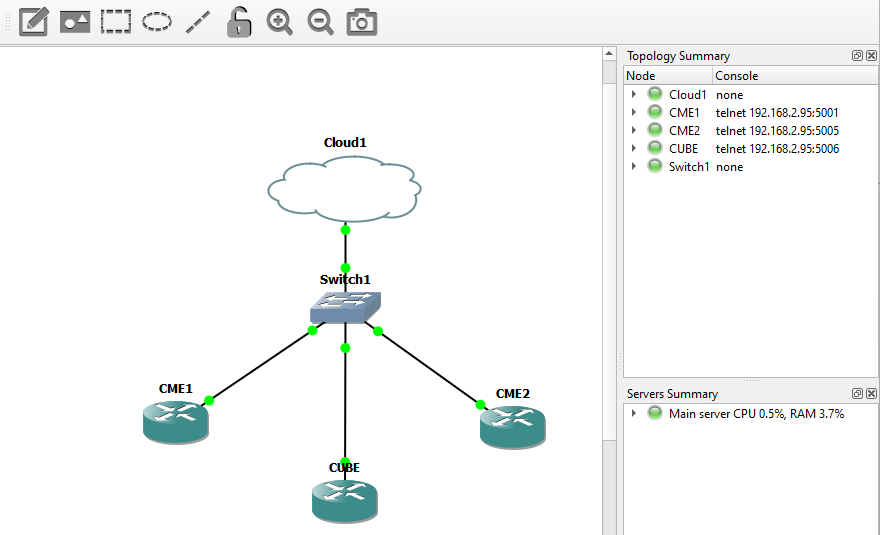With may vendors going virtualization, it is possible to run virtual labs where it requires physical equipment before(such as Cisco ISR routers). CML, VIRL, GNS3, EVE-NG, etc. we all heard about them. But how can we run a meaningful lab with minimal resource? That way, we don't have to fire up the lousy UCS servers?
Take the following diagram as an example. I was working with a group of developers on a voice product, which require a lot of custom tagging in the SIP messages. My job is to configure the routers to copy/modify/manipulate the SIP message. (Yes, a lot of SIP profiles and regex).
It'd be great if I can run the lab on my laptop. Did I mention that I have 2-3 production VMs (Virtual Machines) running on my laptop already? Adding GNS3 and some virtual routers will definitely have impact on CPU and memory usage.
I achieved the goal with IOL (I86BI_LINUX-ADVENTERPRISEK9-M, Version 15.7(3)M2), which requires 384MB memory per each router. The IOL image boots much faster than the CSR1000V or the C8000V virtual routers (which requires 4GB memory each).
I created 3 router instances. Two of them are acting as CME, with MicroSIP softphone registered. One of them is acting as a CUBE. You don't actually need the CUBE license, nor the "mode border-element" command. To test SIP profiles and SIP header manipulation, you just configure regular voip dial-peers.
As mentioned in the previous blog, Sandboxie comes handy when you need to run multiple softphones on the same computer. The footprint is much smaller than launching multiple VMs.
With this lab, I can make test calls from CME1 to CME2 via the CUBE. I can do all kinds of manipulations.





No comments:
Post a Comment